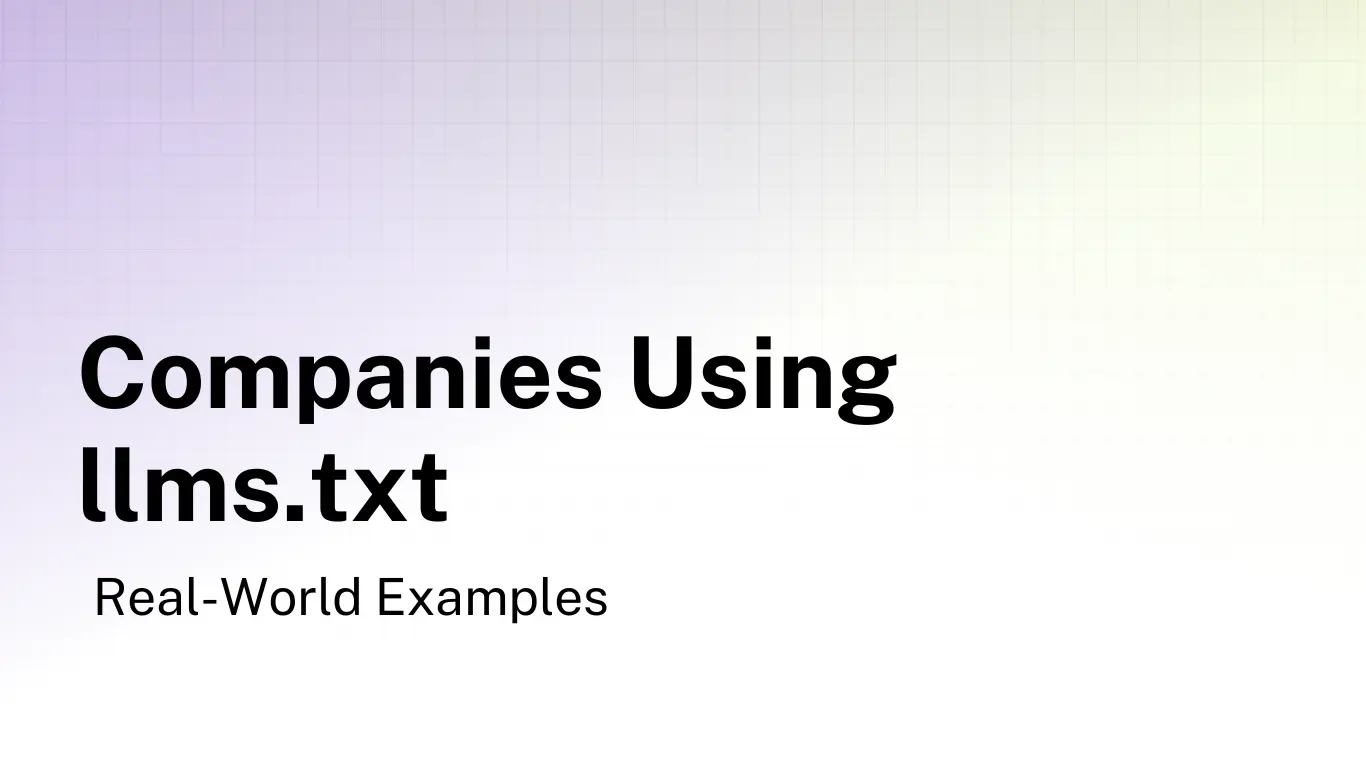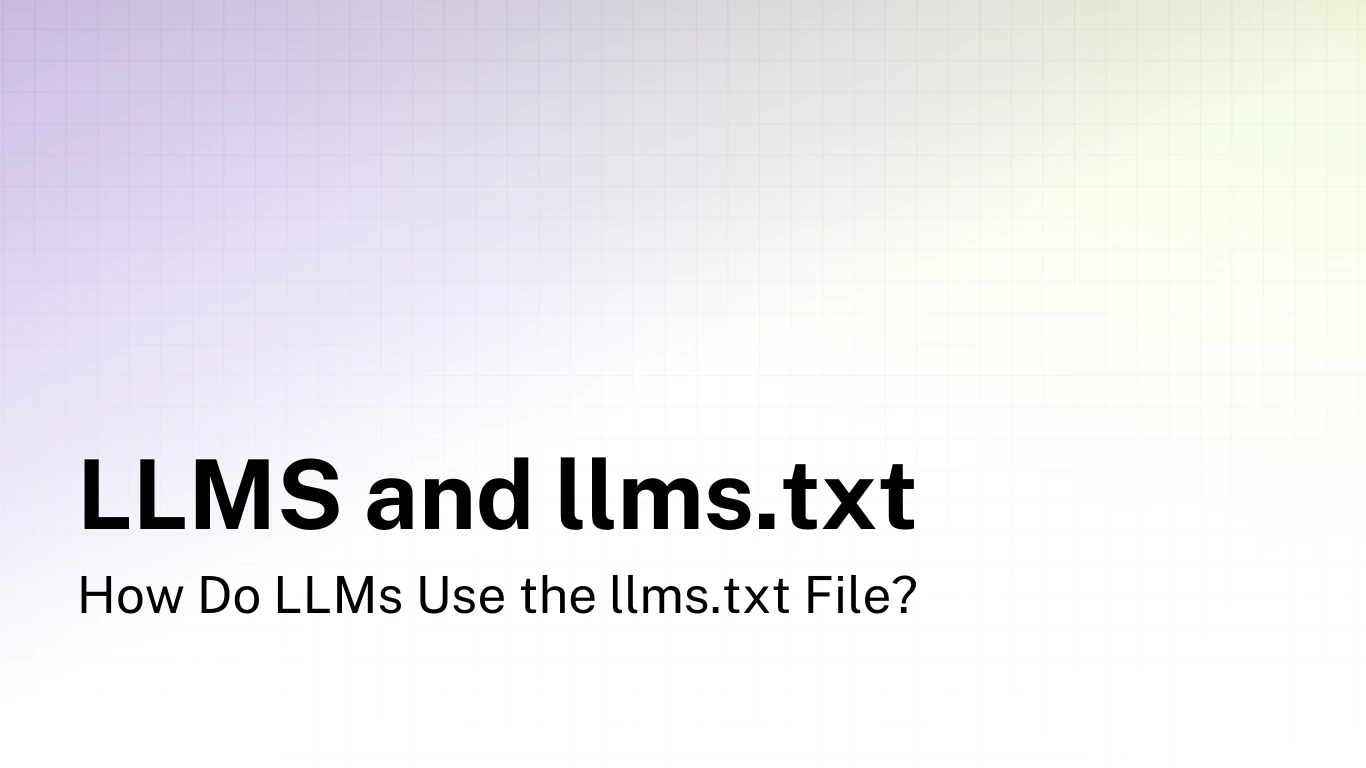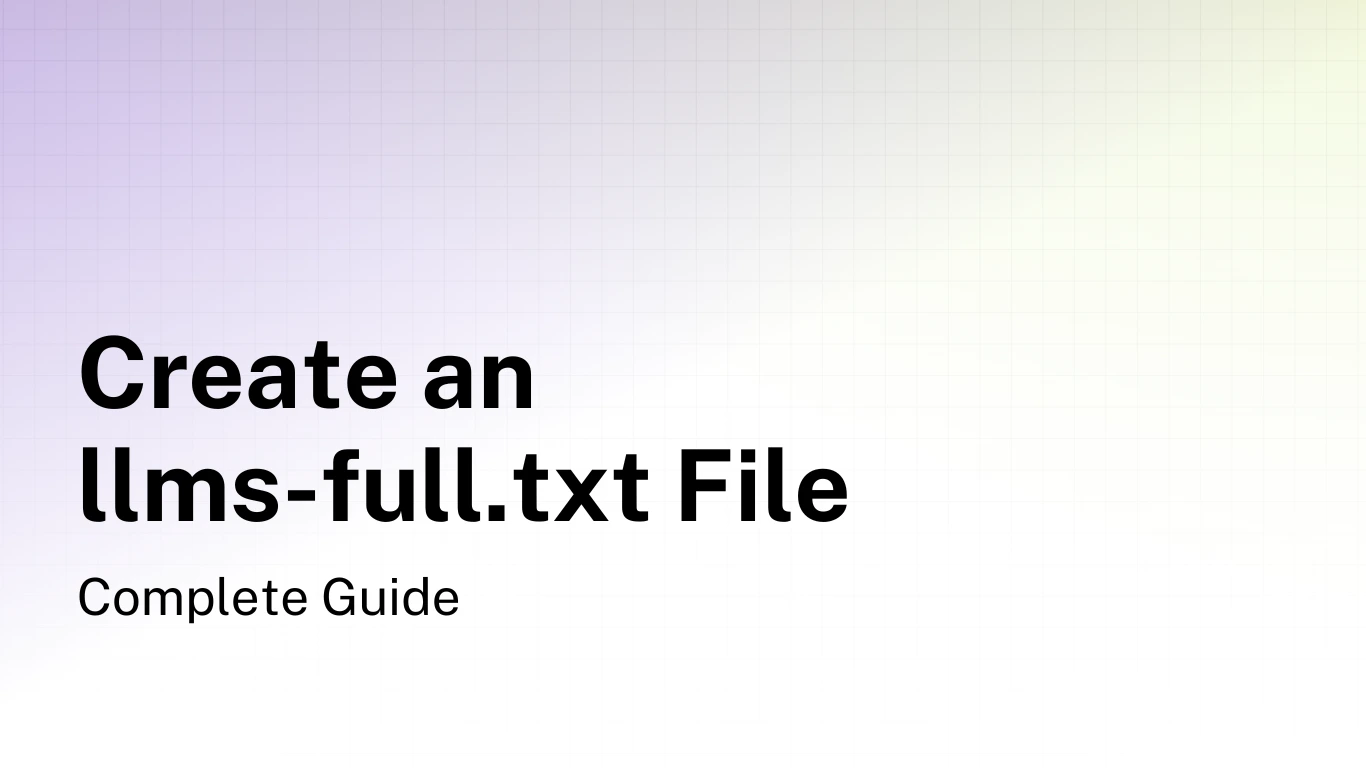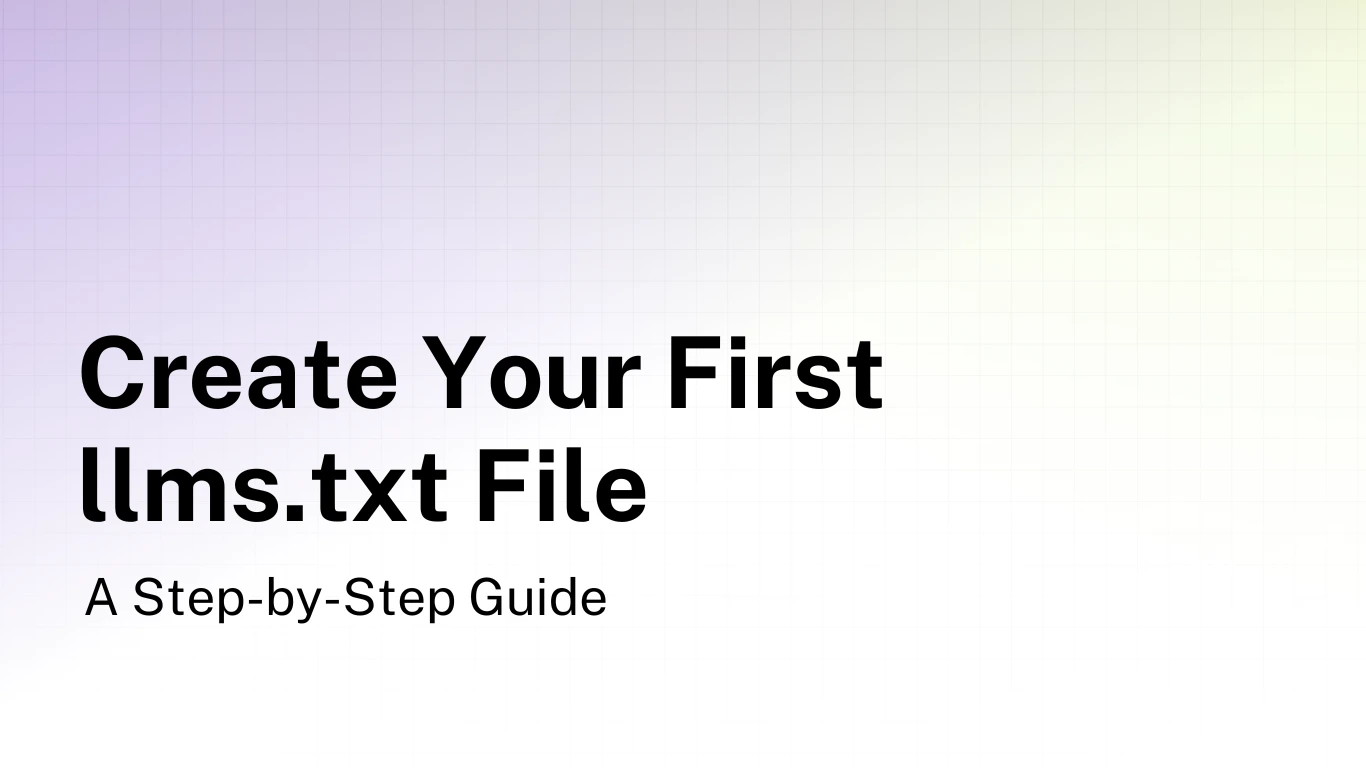Do You Need Both llms.txt and llms-full.txt? A Complete Guide
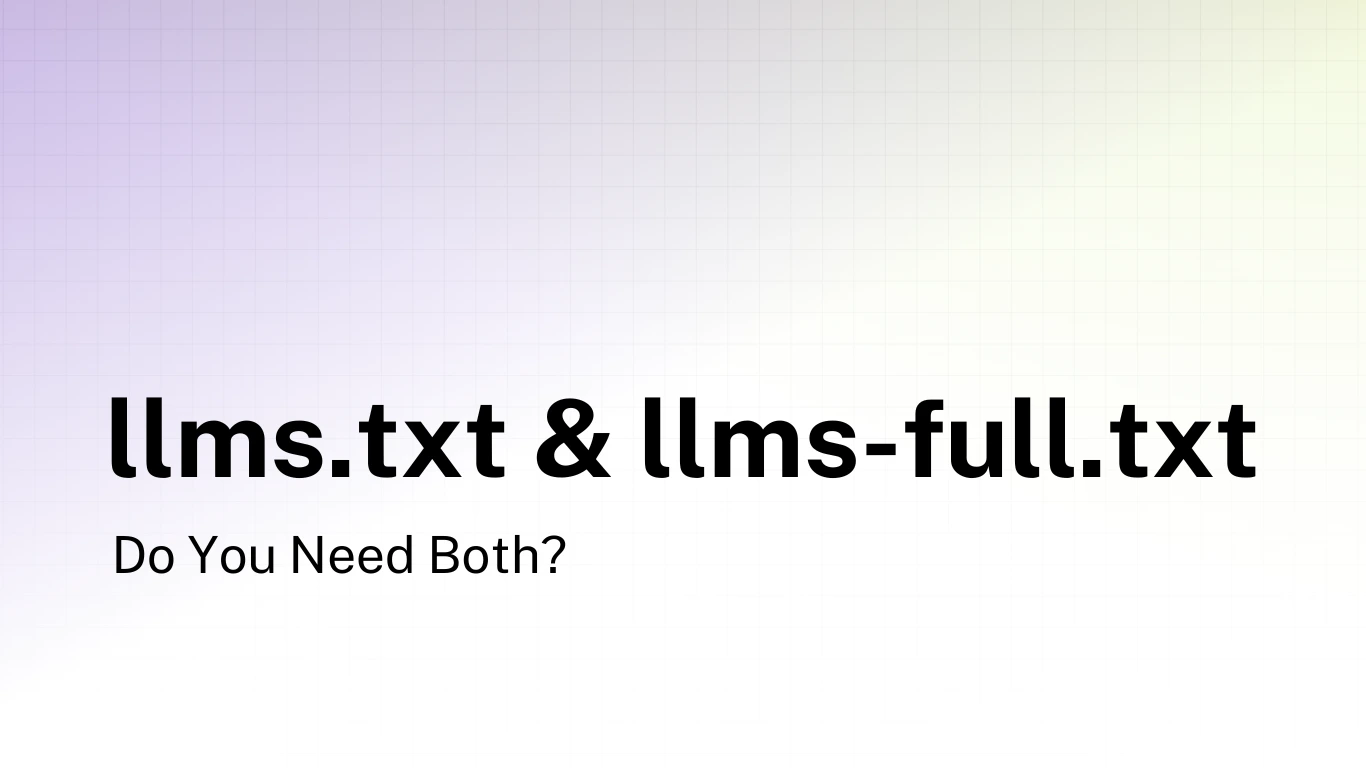
When I first implemented the llms.txt standard for a client's documentation site, their immediate question was: "Do we also need to create an llms-full.txt file? What's the difference?"
It's a common question. With two different file formats in the llms.txt ecosystem, it's important to understand their distinct purposes and when you might need one, the other, or both.
In this guide, I'll break down the differences between llms.txt and llms-full.txt, how they complement each other, and help you decide which approach is right for your website.
The Key Differences
Before diving into details, here's a quick comparison of these two file types:
| Feature | llms.txt | llms-full.txt |
|---|---|---|
| Primary purpose | Navigation and structure | Complete content |
| Content included | Summary and links | Full documentation |
| Size | Small (typically < 10KB) | Large (can be multiple MB) |
| Implementation complexity | Simple | More complex |
| Best for | Quick orientation | In-depth assistance |
| Format | Structured markdown | Consolidated markdown |
Now, let's explore each file in depth.
Understanding llms.txt: The Navigation File
An llms.txt file serves as a navigation guide for AI language models. It provides a concise summary of your website or project, a structured hierarchy of important content, links to markdown files with more detailed information, and suggestions for which content is essential versus optional.
Here's a typical example:
# Project Documentation
> An open-source framework for building responsive web applications.
This framework provides components, utilities, and patterns for creating modern web experiences.
## Getting Started
- [Installation](https://example.com/docs/installation.md): How to install and set up the framework
- [Quick Start](https://example.com/docs/quickstart.md): Build your first application
## Components
- [Button](https://example.com/docs/components/button.md): Button component documentation
- [Form](https://example.com/docs/components/form.md): Form component documentation
## Optional
- [Contributing](https://example.com/docs/contributing.md): How to contribute to the project
- [Change Log](https://example.com/docs/changelog.md): Version history
The llms.txt file shines when an AI needs to quickly understand what your project is about, find specific information, conserve context window space, or when you want to control exactly which resources the AI accesses. Think of llms.txt as the map that helps AI systems navigate your content ecosystem. Understanding how LLMs process these navigation files can help you structure yours more effectively.
Understanding llms-full.txt
While llms.txt provides structure and navigation, llms-full.txt contains the actual complete content. It includes all the important documentation in a single file, with formatted markdown that preserves the structure and hierarchy, including the full text of linked pages from your llms.txt.
Here's a simplified example of what llms-full.txt might look like:
# Project Documentation
An open-source framework for building responsive web applications.
This framework provides components, utilities, and patterns for creating modern web experiences.
## Getting Started
### Installation
To install the framework, run:
npm install @example/framework
Make sure you have Node.js version 14 or higher installed.
### Quick Start
Create your first application by following these steps:
1. Initialize a new project
2. Add dependencies
3. Configure settings
4. Build your components
...and so on with all the content from your documentation...
The llms-full.txt file is valuable when an AI needs complete information to provide detailed help, when sharing code examples and implementation details, as an offline reference, or when you want to ensure the AI has all relevant information without needing to fetch multiple files. Think of llms-full.txt as the encyclopedia that gives AI systems full knowledge of your content.
Choosing What You Need
The short answer: It depends on your use case, but for most websites, having both provides the best experience.
When Both Files Make Sense
Having both files works well when your documentation is extensive and wouldn't fit in a single context window, when you serve different AI use cases (some needing navigation, others needing full content), or when you want to provide the best possible experience. This is the approach taken by many developer tools and documentation sites. Looking at how companies like Stripe, Zapier, and Cloudflare implement both files shows the value of this dual approach.
Major companies provide both files for flexibility. Anthropic's Claude documentation, Zapier, and Cloudflare all maintain both llms.txt and llms-full.txt versions to give AI systems maximum flexibility in how they access information.
When One File Is Enough
You might only need llms.txt when your content is already well-structured online with each linked .md file easily accessible, your documentation is relatively small, or you're just getting started with the standard.
Conversely, llms-full.txt alone might suffice when your documentation is concise enough to fit in one file, you have a simple documentation structure, or your content changes infrequently.
Practical Implementation
If you decide to implement both files, there are some practical matters to consider.
One challenge is keeping both files in sync. You might want to create an automated process that generates both files from your source content, update the files as part of your build process, or implement versioning to ensure both files reflect the same documentation version.
The implementation approach varies by platform. If you're using WordPress, most plugins automatically generate both files. For Next.js or React applications, you can set up dynamic generation to keep both files in sync. Check out our platform-specific guides on adding llms.txt to WordPress or implementing it in Next.js and React for detailed instructions.
It's also important to ensure both files are properly accessible. Both should be at the root of your domain, served with the correct MIME types (text/markdown or text/plain), and your llms.txt should include a link to llms-full.txt. You can verify your implementation using our validation tool.
Real-World Applications
Different organizations implement these files in various ways based on their needs.
- A code editor might use llms.txt for a structured overview with links to sections on installation, features, and API documentation, while its llms-full.txt contains complete documentation including all code examples and tutorials.
- A SaaS company might use llms.txt to link to product explanations, pricing, and support information, with llms-full.txt providing detailed information about their offerings, integration guides, and FAQs.
- An open-source project might include llms.txt with an overview of the project structure, installation, and contributing guidelines, while llms-full.txt contains the complete README, contribution guidelines, API documentation, and examples.
Browse our directory of sites using llms.txt to see how different types of organizations structure their implementations.
How AI Systems Use These Files
Different AI tools utilize these files in specialized ways. AI assistants like Claude or ChatGPT might use llms.txt to navigate to relevant sections of documentation, then retrieve specific pages as needed. Development environments like Cursor or GitHub Copilot might prefer llms-full.txt for complete context when helping with coding tasks.
Documentation tools might use llms.txt to build a navigation structure and link to specific content, while research agents might combine both files—using llms.txt for orientation and llms-full.txt for deeper understanding.
Creating Your Files
If you're ready to create either or both files, we have detailed guides to help:
- How to Create Your First llms.txt File - Step-by-step guide to creating the navigation file
- How to Create an llms-full.txt File - Detailed instructions for the full content version
Both guides include examples, best practices, and tips for maintaining your files over time.
Best Practices
If you implement both files, consider these approaches.
In your llms.txt, include a cross-reference link to llms-full.txt for AI systems that prefer the complete approach:
# My Project
> A brief description of my project.
For complete documentation in a single file, see [Full Documentation](https://example.com/llms-full.txt).
## Documentation
...
Keep information consistent across both files and ensure they reflect the same version of your documentation. Put important information first to maximize the value of limited context windows, use consistent heading levels and formatting, and update both files regularly as your documentation evolves.
Conclusion
While llms.txt and llms-full.txt serve different purposes, they complement each other in creating an AI-friendly content ecosystem. The navigation-focused llms.txt helps AI systems understand your content structure, while llms-full.txt provides the complete information.
For most websites with substantial documentation, implementing both files provides the best experience for AI systems and ultimately for the humans they assist. However, depending on your specific situation, one file type might be sufficient.
As the llms.txt standard continues to evolve, we may see more refined approaches to balancing structure and thoroughness in AI-accessible content. For now, following the patterns established by leading tech companies and using our tools to validate your implementation will set you up for success.
Questions about implementation? Check our FAQ or get in touch for personalized guidance.

